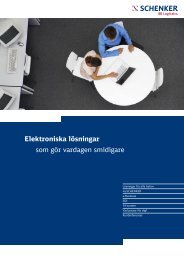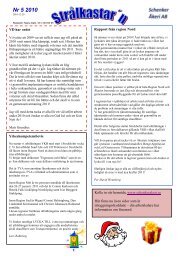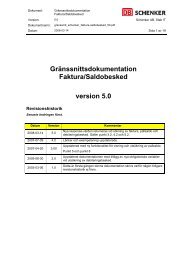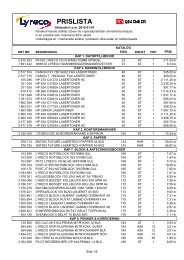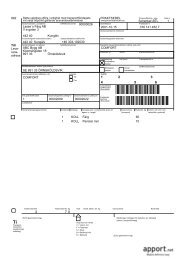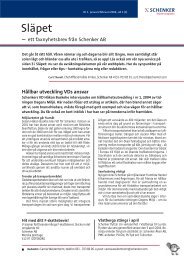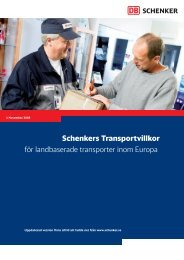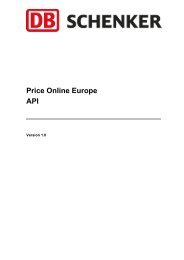Ecological Transport Information Tool for Worldwide ... - Schenker
Ecological Transport Information Tool for Worldwide ... - Schenker
Ecological Transport Information Tool for Worldwide ... - Schenker
You also want an ePaper? Increase the reach of your titles
YUMPU automatically turns print PDFs into web optimized ePapers that Google loves.
Page 80<br />
IFEU Heidelberg, Öko-Institut, IVE, RMCON<br />
Allocation of electricity from CHP and its environmental impacts<br />
In some cases electricity <strong>for</strong> rail transport is produced in power plants producing both electricity<br />
and heat (cogeneration or Combined Heat and Power - CHP). There<strong>for</strong>e the environmental<br />
impacts of running the power plant have to be burdened (allocated) on both output products. As<br />
well. Amongst others the following allocation methodologies are feasible:<br />
1. Allocation by Energy<br />
2. Allocation by Exergy<br />
3. Approach mentioned in /Directive 2004/8/EC/<br />
The allocation by energy is based on the assumption that one unit of heat is equivalent to one<br />
unit of electricity. This assumption is also the main disadvantage of this approach, because in<br />
regards to thermodynamics electricity has a higher work potential than heat. So the more valuable<br />
product of cogeneration is electricity and actually has to be burdened with more environmental<br />
impact units than heat. Thus this allocation methodology favours electricity.<br />
In contrast the allocation by exergy is considering the different valence of electricity and heat. In<br />
/Heck 2004/ one unit electricity is equivalent to 0.17 unit heat. This methodology is favoured by<br />
scientific institutions (e. g. IFEU) but does not represent an approved European standard <strong>for</strong><br />
CHP allocation so far.<br />
Compared to the allocation by exergy the approach mentioned in /Directive 2004/8/EC/ (also<br />
called “Finnish Methodology”) represents a European wide accepted methodology. It was developed<br />
to calculate the efficiency of new CHP power plants. There<strong>for</strong>e the difference (reduction)<br />
between the production in CHP and the production in a separate heat and a separate electricity<br />
power plant is estimated. The default values <strong>for</strong> the separate production are defined by<br />
/Decision 2007/74/EC/. The methodology does not take the different valence of electricity and<br />
heat into account (cp. exergy). But electricity gets a lower environmental benefit compared to<br />
the allocation by energy. And this methodology is approved within the European Union. Thus<br />
we use this approach to allocate the environmental impacts of cogeneration.<br />
The following table shows the effect of using the three described allocation methodologies on<br />
the overall efficiency and CO 2 -emission factor:<br />
EcoTransIT World: Methodology and Data – July 15 th , 2010



